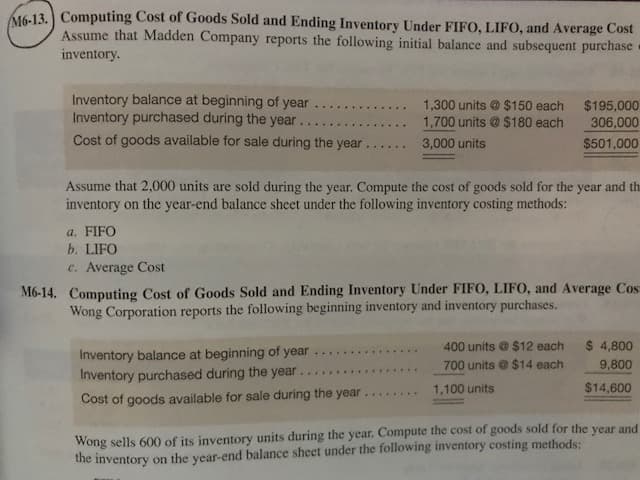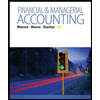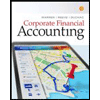(613 Computing Cost of Goods Sold and Ending Inventory Uinder FIFo, LIFO, and Average Cost Computing Cost of Goods Sold and Ending Inventory Under 16- Assume that Madden Company reports the following initial balance and subsequent purcha inventorv. Inventory balance at beginning of year ......1,300 units$150 each $195,000 Inventory purchased during the year 1,700 units $180 each 306,000 Cost of goods available for sale during the year..... 3,000 units $501,000 Assume that 2,000 units are sold during the year. Compute the cost of goods sold for the year and th inventory on the year-end balance sheet under the following inventory costing methods: a. FIFO b. LIFO c. Average Cost M6-14. Computing Cost of Goods Sold and Ending Inventory Under FIFO, LIFO, and Average Cos Wong Corporation reports the following beginning inventory and inventory purchases. 400 units $12 each 4,800 Inventory balance at beginning of year . Inventory purchased during the year 700 units@$14 each Cost of goods available for sale during the year .....1,100 units 9,800 $14,600 Wong sells 600 of its inventory units during the year. Compute the cost of goods sold for the year the inventory on the year-end balance sheet under the following inventory costing methods: and
(613 Computing Cost of Goods Sold and Ending Inventory Uinder FIFo, LIFO, and Average Cost Computing Cost of Goods Sold and Ending Inventory Under 16- Assume that Madden Company reports the following initial balance and subsequent purcha inventorv. Inventory balance at beginning of year ......1,300 units$150 each $195,000 Inventory purchased during the year 1,700 units $180 each 306,000 Cost of goods available for sale during the year..... 3,000 units $501,000 Assume that 2,000 units are sold during the year. Compute the cost of goods sold for the year and th inventory on the year-end balance sheet under the following inventory costing methods: a. FIFO b. LIFO c. Average Cost M6-14. Computing Cost of Goods Sold and Ending Inventory Under FIFO, LIFO, and Average Cos Wong Corporation reports the following beginning inventory and inventory purchases. 400 units $12 each 4,800 Inventory balance at beginning of year . Inventory purchased during the year 700 units@$14 each Cost of goods available for sale during the year .....1,100 units 9,800 $14,600 Wong sells 600 of its inventory units during the year. Compute the cost of goods sold for the year the inventory on the year-end balance sheet under the following inventory costing methods: and
Cornerstones of Financial Accounting
4th Edition
ISBN:9781337690881
Author:Jay Rich, Jeff Jones
Publisher:Jay Rich, Jeff Jones
Chapter6: Cost Of Goods Sold And Inventory
Section: Chapter Questions
Problem 41BE: ( Appendix 6B) Inventory Costing Methods: Periodic Inventory Systems. Refer to the information for...
Related questions
Question

Transcribed Image Text:(613 Computing Cost of Goods Sold and Ending Inventory Uinder FIFo, LIFO, and Average Cost
Computing Cost of Goods Sold and Ending Inventory Under
16-
Assume that Madden Company reports the following initial balance and subsequent purcha
inventorv.
Inventory balance at beginning of year ......1,300 units$150 each $195,000
Inventory purchased during the year 1,700 units $180 each 306,000
Cost of goods available for sale during the year..... 3,000 units
$501,000
Assume that 2,000 units are sold during the year. Compute the cost of goods sold for the year and th
inventory on the year-end balance sheet under the following inventory costing methods:
a. FIFO
b. LIFO
c. Average Cost
M6-14. Computing Cost of Goods Sold and Ending Inventory Under FIFO, LIFO, and Average Cos
Wong Corporation reports the following beginning inventory and inventory purchases.
400 units $12 each 4,800
Inventory balance at beginning of year .
Inventory purchased during the year 700 units@$14 each
Cost of goods available for sale during the year .....1,100 units
9,800
$14,600
Wong sells 600 of its inventory units during the year. Compute the cost of goods sold for the year
the inventory on the year-end balance sheet under the following inventory costing methods:
and
Expert Solution
This question has been solved!
Explore an expertly crafted, step-by-step solution for a thorough understanding of key concepts.
This is a popular solution!
Trending now
This is a popular solution!
Step by step
Solved in 4 steps with 4 images

Recommended textbooks for you

Cornerstones of Financial Accounting
Accounting
ISBN:
9781337690881
Author:
Jay Rich, Jeff Jones
Publisher:
Cengage Learning

Financial & Managerial Accounting
Accounting
ISBN:
9781285866307
Author:
Carl Warren, James M. Reeve, Jonathan Duchac
Publisher:
Cengage Learning

Corporate Financial Accounting
Accounting
ISBN:
9781305653535
Author:
Carl Warren, James M. Reeve, Jonathan Duchac
Publisher:
Cengage Learning

Cornerstones of Financial Accounting
Accounting
ISBN:
9781337690881
Author:
Jay Rich, Jeff Jones
Publisher:
Cengage Learning

Financial & Managerial Accounting
Accounting
ISBN:
9781285866307
Author:
Carl Warren, James M. Reeve, Jonathan Duchac
Publisher:
Cengage Learning

Corporate Financial Accounting
Accounting
ISBN:
9781305653535
Author:
Carl Warren, James M. Reeve, Jonathan Duchac
Publisher:
Cengage Learning

Principles of Accounting Volume 1
Accounting
ISBN:
9781947172685
Author:
OpenStax
Publisher:
OpenStax College